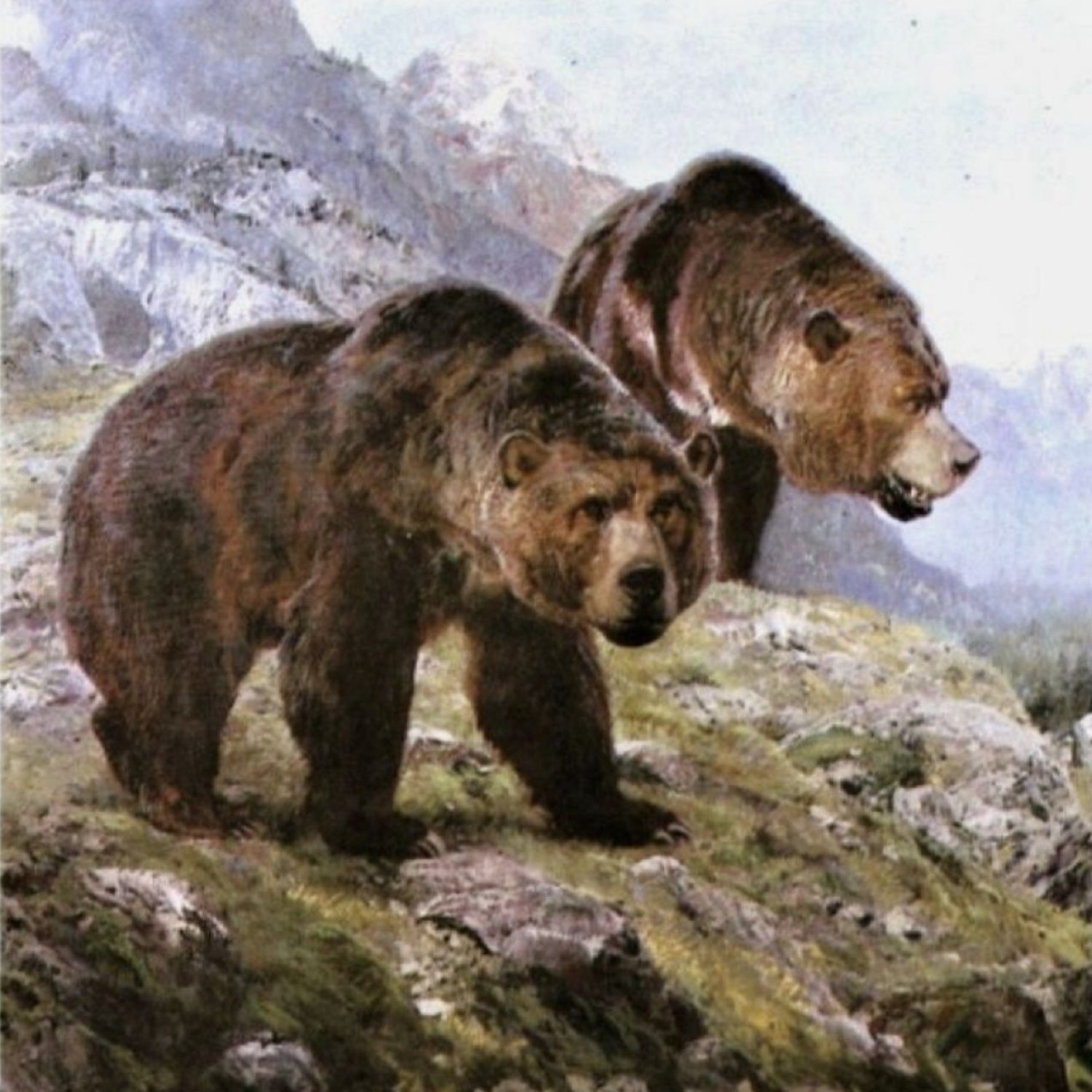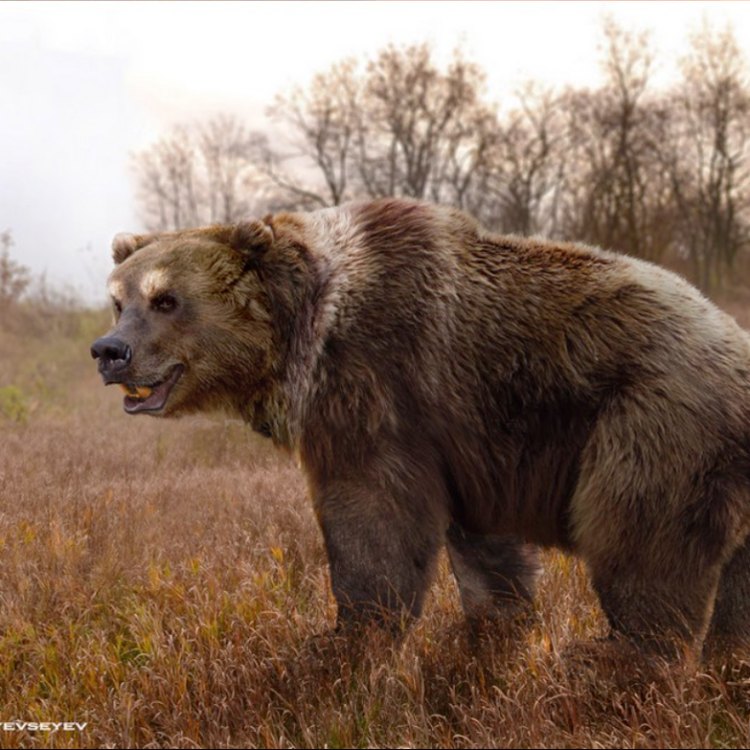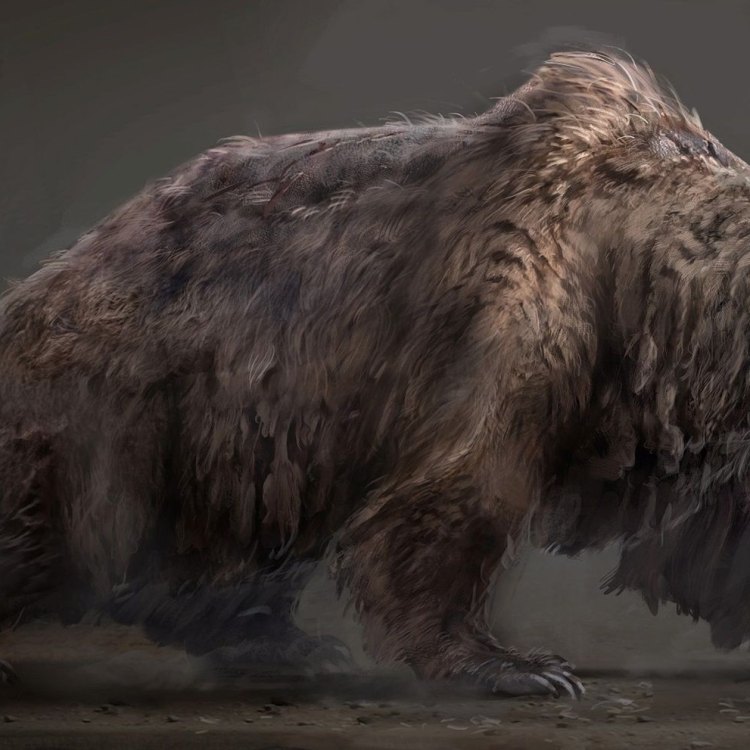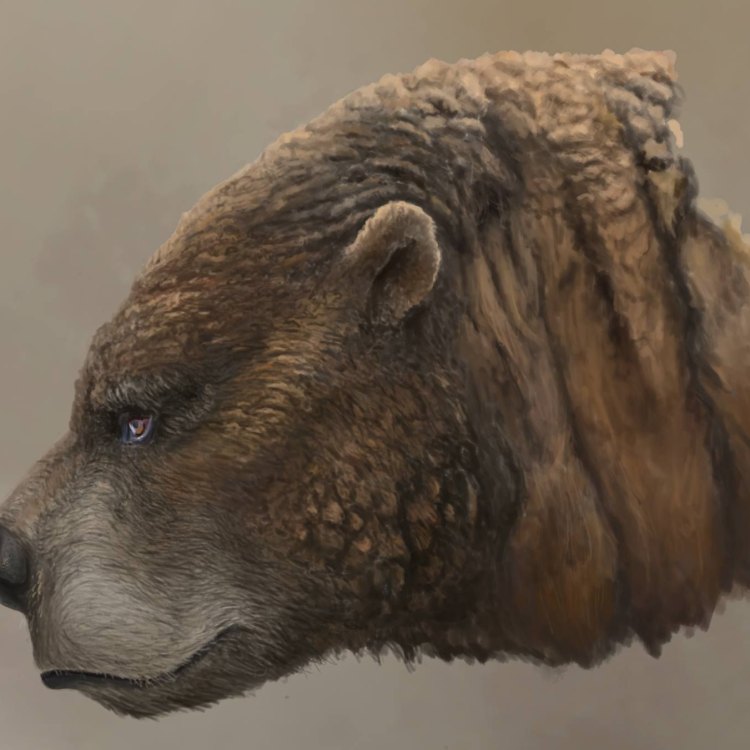
Cave Bear
2.7 m (8.9 ft)
Meet the majestic Cave Bear! Standing at 2.7 meters (8.9 feet) tall and belonging to the Ursidae family, this extinct animal had a large and robust body shape. Unlike its modern-day relatives, the Cave Bear was adapted to life in cold climates, making it a fearsome predator. Although no longer alive, its remains have provided us with valuable insights into the prehistoric world.
Animal Details Summary:
Common Name: Cave Bear
Kingdom: Animalia
Habitat: Caves
The Enigmatic and Extinct Cave Bear: A Fascinating Creature of Europe
The world is full of fascinating creatures, both past and present. While many animals capture our attention with their unique physical characteristics or behaviors, there are some that stand out for their enigmatic qualities. One such creature is the Cave Bear, an extinct species that roamed the caves of Europe during the Ice Age.With its scientific name, Ursus spelaeus, the Cave Bear is also commonly known as the "Cave Bear Cave Bear." This majestic creature was a member of the animal kingdom, phylum Chordata, and class Mammalia. It belonged to the order Carnivora, which may come as a surprise given its omnivorous feeding method. The Cave Bear was a member of the Ursidae family, making it a close relative of modern-day bears such as the brown bear and the polar bear.
The Habitat and Distribution of the Cave Bear
As its name suggests, the Cave Bear was well adapted to live in the dark and enclosed environments of caves. These caves provided shelter and safety for the bears and also served as a hibernation spot during winter. The geographical distribution of the Cave Bear was limited to Europe, where they could be found from the Mediterranean region to as far north as Britain and Scandinavia.The Cave Bear is believed to have evolved from the much smaller Early Pleistocene bears. As they adapted to living in caves, they grew in size and became distinguishable from other bear species. This evolution of the Cave Bear into a large and robust creature is evident in its physical characteristics Capybara.
The Physical Characteristics of the Cave Bear
One of the most striking features of the Cave Bear was its size. It was a giant compared to other bear species, with an average length of 2.7 meters (8.9 feet) and a height of 1.7 meters (5.6 feet). These measurements make the Cave Bear larger than the modern-day grizzly bear and polar bear. Additionally, it is estimated that a fully grown Cave Bear weighed anywhere between 400 to 800 kilograms, making it one of the heaviest land mammals of the Ice Age.Apart from its size, the Cave Bear was also distinct in its build. It had a large and robust body, with strong limbs and a broad chest. This physical build aided in their adaptation to living in caves, where they could navigate through narrow passages and climb over rocks with ease.
The Cave Bear's thick fur was another notable feature. It had a brown coloration, similar to that of modern-day bears, which made it difficult for predators to spot them in their cave habitats. However, this coloration may have also made them more susceptible to overheating in warmer climates, limiting their distribution to Europe's colder regions.
The Extinction of the Cave Bear
Despite their formidable size and strength, the Cave Bear's existence was short-lived. They are believed to have become extinct about 25,000 years ago, during the last Ice Age. The exact cause of their extinction is still a mystery, although there are several theories.One theory suggests that the Cave Bears' large size and reduced mobility made it difficult for them to adapt to the rapidly changing climate during the Ice Age. As the temperature rose and glaciers retreated, their habitat and food sources may have dwindled, leading to a decline in their population.
Another theory suggests that the arrival of early humans in Europe may have played a significant role in the Cave Bear's extinction. These humans may have hunted the bears for food and materials, disrupting their population and ultimately leading to their disappearance.
The Legacy of the Cave Bear
While the Cave Bear may have gone extinct thousands of years ago, its legacy lives on. The discovery of their well-preserved remains in caves has provided scientists with valuable insights into their physical characteristics, behavior, and evolution. One particularly fascinating aspect of their legacy is the fact that they may have inspired the legend of "cave monsters" or "dragons" in various cultures.Moreover, the Cave Bear also has a place in pop culture, appearing in books, movies, and video games as a powerful and intimidating creature. Its mysterious and extinct status adds a layer of intrigue to its portrayal, capturing the imagination of people even today.
In Conclusion
The Cave Bear may have been extinct for thousands of years, but its enigmatic qualities continue to fascinate us. From its impressive size and build to its adaptation to cave habitats, this bear was a truly unique and impressive creature. As we continue to learn more about our planet's past through scientific discoveries, the legacy of the Cave Bear will undoubtedly live on. We may never know all the details of its disappearance, but we can appreciate this extinct species for the remarkable animal that it was.

Cave Bear
Animal Details Cave Bear - Scientific Name: Ursus spelaeus
- Category: Animals C
- Scientific Name: Ursus spelaeus
- Common Name: Cave Bear
- Kingdom: Animalia
- Phylum: Chordata
- Class: Mammalia
- Order: Carnivora
- Family: Ursidae
- Habitat: Caves
- Feeding Method: Omnivorous
- Geographical Distribution: Europe
- Country of Origin: Europe
- Location: Extinct
- Animal Coloration: Brown
- Body Shape: Large and robust
- Length: 2.7 m (8.9 ft)

Cave Bear
- Adult Size: Height: 1.6 m (5.2 ft), Weight: up to 1 ton
- Average Lifespan: 25 to 30 years
- Reproduction: Sexual
- Reproductive Behavior: Unknown
- Sound or Call: Unknown
- Migration Pattern: Unknown
- Social Groups: Solitary (likely)
- Behavior: Docile and herbivorous
- Threats: Extinction due to climate change and human hunting
- Conservation Status: Extinct
- Impact on Ecosystem: Unknown
- Human Use: Hunted by early humans for food and materials
- Distinctive Features: Prominent hump on shoulders, long and powerful forelimbs
- Interesting Facts: Cave Bears were one of the largest bear species to have ever lived
- Predator: No natural predators

Ursus spelaeus
The Mighty Cave Bear: A Fascinating Tale of Extinction and Survival
The ancient world was a mysterious and dangerous place, filled with majestic creatures and treacherous landscapes. One such creature that roamed the earth thousands of years ago was the Cave Bear. These magnificent beasts dominated the prehistoric world and are a source of fascination for scientists and history buffs alike.In this article, we will take a closer look at the amazing features of the Cave Bear and uncover its mysterious behavior, reproductive habits, and ultimate fate PeaceOfAnimals.Com. So, buckle up and get ready for a journey through time to discover the secrets of this mighty and extinct creature.
The Cave Bear, also known by its scientific name Ursus speleaus, was a massive bear that lived during the Pleistocene era, around 300,000 to 15,000 years ago. These prehistoric creatures were endemic to Europe and Asia, with their remains being found in various caves and gravel pits across these regions.
Measuring up to 1.6 meters (5.2 feet) in height and weighing up to a whopping one ton, the Cave Bear was one of the largest bear species to have ever lived. But despite its intimidating size, this creature was known to be docile and herbivorous, primarily feeding on plants and fruits.
One of the most distinctive and fascinating features of the Cave Bear was its prominent hump on its shoulders, which was believed to be a result of a specialized adaptation for digging and foraging. This feature gave the Cave Bear a unique appearance, making them stand out among other species of the bear family Cookiecutter Shark.
But this hump was not the only physical trait that set the Cave Bear apart from its relatives. They also had long and powerful forelimbs that were used for digging, climbing, and foraging. These limbs, combined with their impressive size, allowed them to dominate the prehistoric landscape as apex predators.
The average lifespan of a Cave Bear was estimated to be around 25 to 30 years, similar to most modern-day bears. However, very little is known about their reproductive behavior as there is no concrete evidence to suggest it. It is believed that they reproduced sexually, like most other mammals, but the exact rituals and habits remain unknown.
While we do not know much about their reproductive behavior, one thing is for sure – the Cave Bear did not have any natural predators. With their impressive size and strength, these creatures were at the top of the food chain, and nothing posed a threat to them in their natural habitat.
But despite their dominance in the prehistoric world, the Cave Bears could not escape their ultimate fate - extinction. The primary cause of their extinction is still a topic of debate among scientists, but it is believed to be a result of a combination of factors - climate change and human hunting.
During the Pleistocene era, the world experienced multiple ice ages, leading to drastic changes in climate and vegetation. The cold temperatures and harsh living conditions would have had a detrimental effect on the survival of the Cave Bear, resulting in a decline in their population.
Additionally, as humans evolved and spread across Europe and Asia, they began to hunt the Cave Bear for food and materials. These bears would have been an easy target for early humans, with their slow movement and herbivorous diet. As a result, their numbers continued to decline until they eventually disappeared from the face of the earth.
The Cave Bear's extinction is a prime example of the impact of climate change and human interference on the natural world. It serves as a reminder that our actions can have severe consequences on the delicate balance of ecosystems, and we must be mindful of our impact on the environment.
Today, the Cave Bear is listed as an extinct species, with their remains only found in museums and paleontological sites. But their legacy lives on in popular culture, with mentions in literature, movies, and even video games. They continue to fascinate and captivate our imagination, serving as a reminder of the diverse and majestic creatures that once roamed the earth.
Apart from their impact on popular culture, the Cave Bear also played a crucial role in the environment during its existence. Due to a lack of natural predators, they would have had a significant impact on vegetation and the surrounding ecosystem. However, with their extinction, it is still a mystery as to how this has affected the environment and its natural balance.
But the Cave Bear's impact on human history goes beyond just being hunted for food and materials. The discovery of their remains in various caves has led to significant advancements in paleontology and our understanding of the prehistoric world. They have provided crucial clues and insights into the flora and fauna that existed during their time, and their study continues to enhance our knowledge of the ancient world.
So, while the Cave Bear may be long gone, their legacy continues to live on, and it serves as a reminder of the resilience and adaptability of life on earth. Their journey through time is a fascinating tale of survival, dominance, and ultimately, extinction, leaving behind a legacy that will be remembered for generations to come.
In conclusion, the Cave Bear was a magnificent and awe-inspiring creature that once roamed the earth. Their impressive size, physical features, and behavior have captivated scientists and the general public for centuries. But more than just being a fascinating species, the Cave Bear serves as a reminder of the impact of climate change and human interference on the delicate balance of our environment.
Their story is a testament to the fragility of life and the constant evolution of our world. And with advancements in technology and science, who knows what other mysteries and secrets the Cave Bear's remains will reveal in the future. So, let's remember and honor this incredible species, and strive to protect and preserve the diversity of life on our planet.

The Enigmatic and Extinct Cave Bear: A Fascinating Creature of Europe
Disclaimer: The content provided is for informational purposes only. We cannot guarantee the accuracy of the information on this page 100%. All information provided here may change without prior notice.












